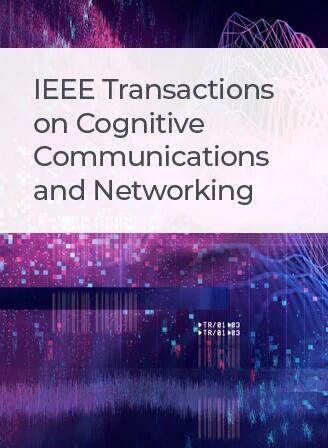SCM-GNN: A Graph Neural Network-Based Multi-Antenna Spectrum Sensing in Cognitive Radio
IF 7.4
1区 计算机科学
Q1 TELECOMMUNICATIONS
IEEE Transactions on Cognitive Communications and Networking
Pub Date : 2024-07-22
DOI:10.1109/TCCN.2024.3431923
引用次数: 0
Abstract
Spectrum Sensing plays a crucial role in cognitive radio and serves as a fundamental requirement for achieving dynamic spectrum access. This work investigates a novel multi-antenna spectrum sensing framework based on graph neural networks to accurately identify the state of primary users. Specifically, the work proposes a graph spectral convolution-based spectrum sensing scheme (SCM-GNN), which employs stacked graph convolutions to capture the dependencies contained in test statistics. To further enhance the detection performance of SCM-GNN, the work introduces a covariance matrix with smooth factor as the test statistic. The covariance matrix includes more discriminative information and assists the SCM-GNN in achieving state-of-the-art detection performance. Simulation results demonstrate that the proposed algorithm outperforms existing works in terms of detection performance under the influence of various non-ideal factors, such as general Gaussian noise, channel fading, large-scale fading, real-world scenario, and imperfect reporting channel.SCM-GNN:认知无线电中基于图神经网络的多天线频谱传感
本文章由计算机程序翻译,如有差异,请以英文原文为准。
求助全文
约1分钟内获得全文
求助全文
来源期刊

IEEE Transactions on Cognitive Communications and Networking
Computer Science-Artificial Intelligence
CiteScore
15.50
自引率
7.00%
发文量
108
期刊介绍:
The IEEE Transactions on Cognitive Communications and Networking (TCCN) aims to publish high-quality manuscripts that push the boundaries of cognitive communications and networking research. Cognitive, in this context, refers to the application of perception, learning, reasoning, memory, and adaptive approaches in communication system design. The transactions welcome submissions that explore various aspects of cognitive communications and networks, focusing on innovative and holistic approaches to complex system design. Key topics covered include architecture, protocols, cross-layer design, and cognition cycle design for cognitive networks. Additionally, research on machine learning, artificial intelligence, end-to-end and distributed intelligence, software-defined networking, cognitive radios, spectrum sharing, and security and privacy issues in cognitive networks are of interest. The publication also encourages papers addressing novel services and applications enabled by these cognitive concepts.
 求助内容:
求助内容: 应助结果提醒方式:
应助结果提醒方式:


